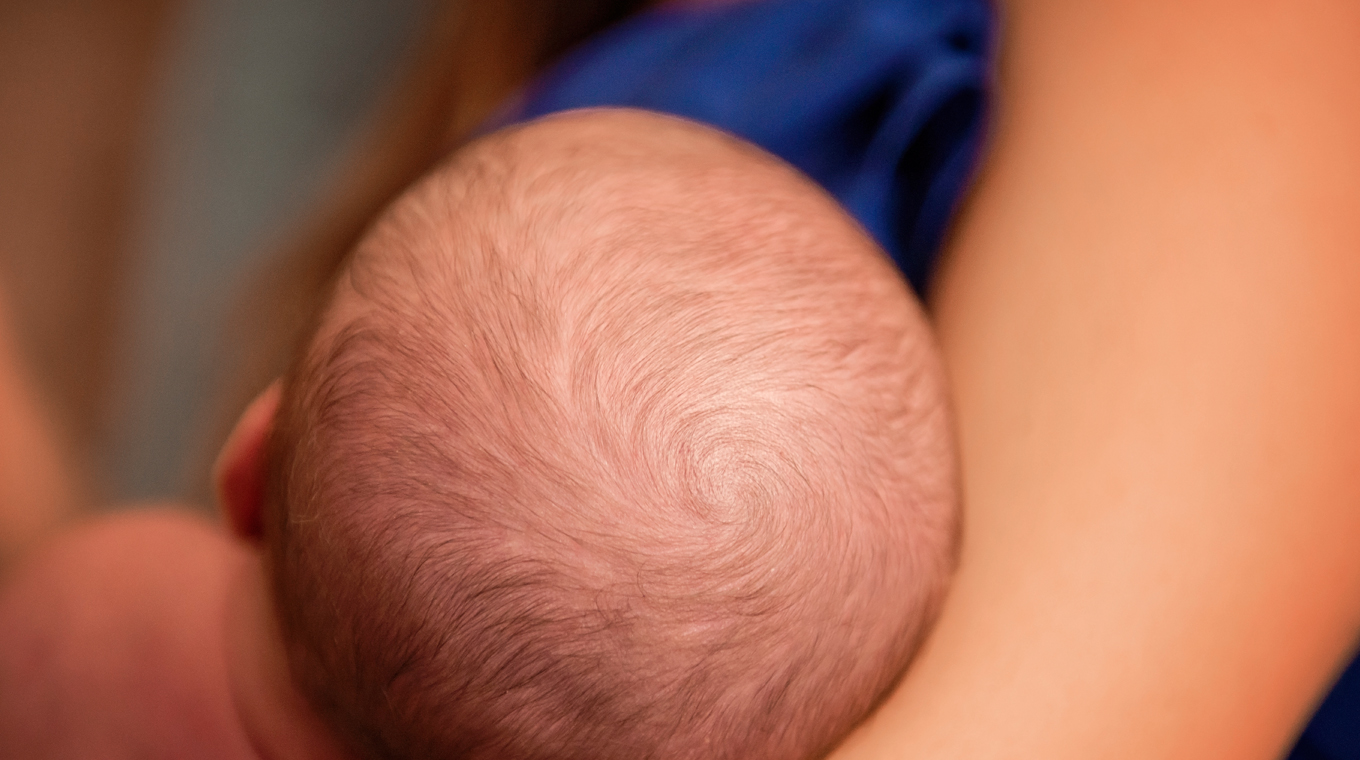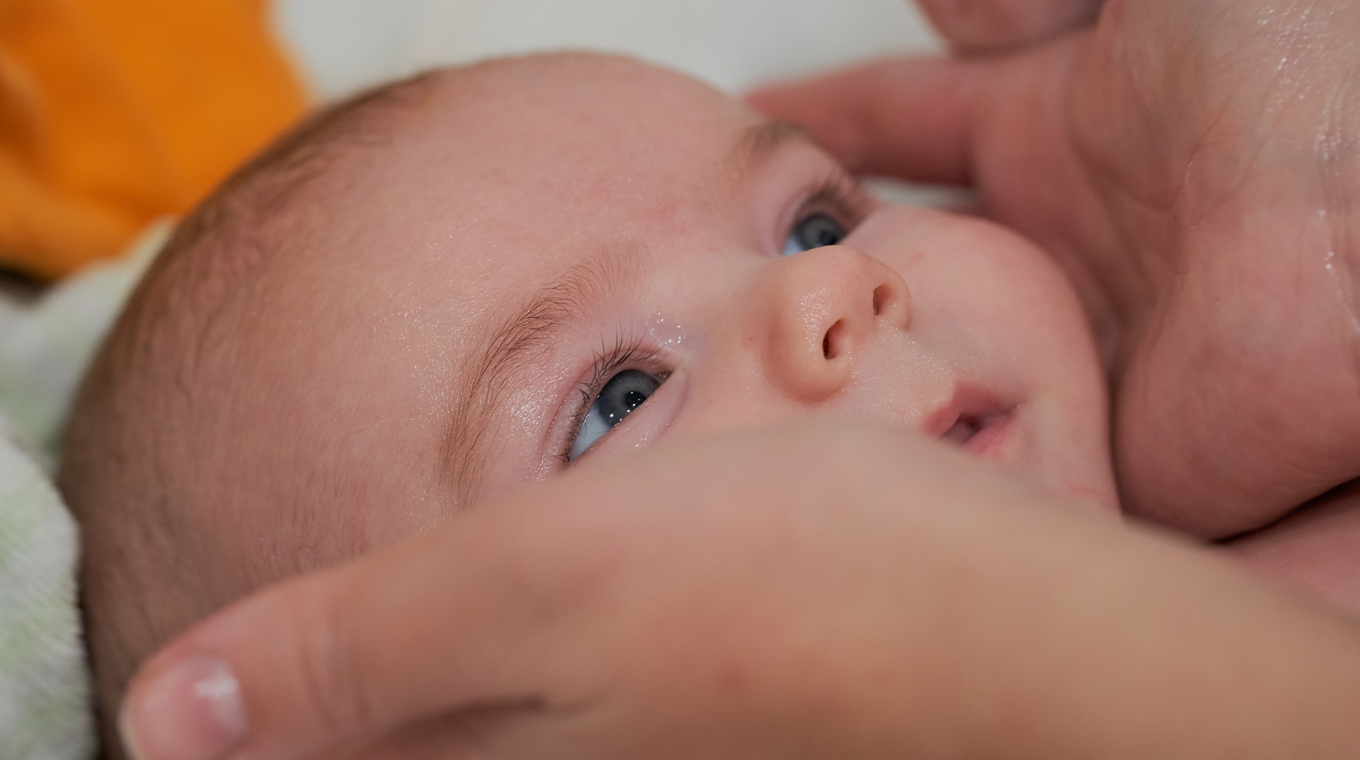
In this article
If you have an infant, you may have noticed that some of the baby-soft skin on their scalp has been replaced by rough, scaly patches. Don't fret: "Cradle cap," as it's known, is very common in the first year of a child's life. According to some research, around 70% of babies experience it by the time they're 3 months old.
What is cradle cap?

Cradle cap is a form of seborrheic dermatitis, a skin condition that causes a scaly, greasy rash. It's not contagious, and it's generally not itchy, either. Symptoms, according to Mayo Clinic, include mild redness, yellow or white scaling, and thick "crusts" on the scalp. (Note: Patches of seborrheic dermatitis may appear on other parts of an infant's body, but "cradle cap" refers specifically to the rash on a baby's head.)
What causes cradle cap?
According to Cleveland Clinic, the exact cause is unknown, but it may have something to do with "overproduction of skin oil or a type of yeast in the oil." Seattle Children's Hospital notes that overactive oil glands are thought to be caused by hormones that cross into the placenta from a child's mother before birth. The extra oil then causes dead skin cells to build up rather than fall off, which leads to the scaly patches associated with cradle cap.
One thing doctors know for sure is that the condition is not caused by poor hygiene. Rest assured that it's not a result of anything you are or aren't doing. That said, there are steps you can take to manage the symptoms.
Cradle cap remedies for babies

According to Mayo Clinic, mild cradle cap typically goes away on its own within a few weeks or months. And since it generally isn't painful or even itchy for your baby, you can usually just manage it at home.
One suggestion is to wash your baby's hair daily with a mild baby shampoo.
"Many parents don’t want to shampoo very often as they are under the impression that the scalp is too dry, but that is not the case," Beverly Hills pediatrician Dr. Lauren Crosby, a fellow of the American Academy of Pediatrics, told Mom.com. "In fact, more frequent shampooing with a mild tear-free baby shampoo, accompanied by a soft scalp brush, can loosen flakes and scales and prevent further buildup."
Allie O'Dell, a mom of two, successfully used this technique when her kids had cradle cap. "The best solution was to wet either an extra-soft toothbrush or one of those funny medical comb-sponge things and just gently rub it when bathing baby," she told Mom.com.
O'Dell also says she has heard of people using coconut oil, but that she hasn't tried it herself. Dr. Crosby sometimes recommends that parents apply a little olive oil to particularly scaly areas before using a brush to loosen the flakes and then shampooing everything. (Leaving the oil for too long can make cradle cap worse.) She notes that coconut oil can be beneficial in place of olive oil but that parents should watch for signs of irritation, as some babies may be sensitive to it.
When to call a doctor

It's never a bad idea to consult your pediatrician if you have questions or concerns about your baby's health. With cradle cap, specifically, mild cases can be managed with the home remedies mentioned above, but if those don't work, or if you notice the patches on other parts of your child's body, you may want to make an appointment. A doctor can help with you with next steps or suggest alternative treatments.
In more severe cases, your pediatrician may recommend a special shampoo or a mild steroid or antifungal cream. But don't use any medicated products on your baby without first consulting a doctor. According to Mayo Clinic, some such products can be toxic when absorbed through a baby's skin.
You should also consult your child's doctor about what you can do to prevent cradle cap from returning once it clears up. Dr. Crosby's recommendation: "Stay on top of scalp care by shampooing daily or every other day and by gently brushing during shampooing to keep loosening flakes and oils so they don’t build up."







